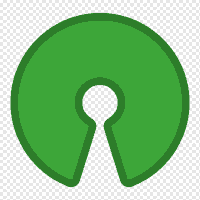
Our Shopping List
- 0 ratings

Simple shared list application. Typical uses include shopping lists of course, and any other small todo-list that needs to be used collaboratively.
Self-host this app for $0.99/mo only!
OSL is a simple shared list application. Typical uses include shopping lists of course, and any other small todo-list that needs to be used collaboratively.

The current implementation provides the following features:
- Multiple boards (can be disabled, see VUE_APP_SINGLEBOARD_MODE)
- Each board with multiple lists
- Real-time sync between users
- Items with the following fields: name, quantity, details
- Checkable items
- 2 display modes for items (unchecked only / checked only, sorted by check time)
- Intuitive search
- Mobile-first UI with swipeable items
- PWA basic support
- Partial internationalisation (i18n)
- Only EN and FR languages are available at that time, but PR are welcome for more!
See examples here.
But, at this date it lacks the following: - Full PWA support with offline mode and deferred sync
Before v2, all of the lists on an instance were available to all users.
Version 2 introduces a new feature called "boards". It's simply a way to group lists together under a common name. That name can then be shared so that people use the lists from a board collaboratively.
But, you might want to disable that feature and keep using a unique board for
your whole instance. In that case, just use the provided
VUE_APP_SINGLEBOARD_MODE environment variable.
But have no fear, you can always:
See next § for instructions on how to enable one mode or the other.
Version 2 has added the multiboard feature which changes the default mode the application runs into.
If you already had a working v1, and would like to upgrade to v2 please follow the steps below:
⚠ Back up your data before proceeding!
VUE_APP_SINGLEBOARD_MODE to 1docker-compose exec app node cli.js board:create --singleboard
docker-compose exec app node cli.js list:move-to-board --all --singleboardVUE_APP_SINGLEBOARD_MODE is not set or set to 0# Get the created board's slug from the output and use it in the following command
docker-compose exec app node cli.js board:create my-board
docker-compose exec app node cli.js list:move-to-board --all --board my-board☝ Screenshots are from v1, but v2 looks mostly the same.
☝ Screenshots are from v1, but v2 looks mostly the same.
With a running MongoDB 4.x container as
mymongo on the host:
docker run --detach \
--name our-shopping-list \
--link mymongo:mongodb \
--publish 80:8080 \
nanawel/our-shopping-listdocker-composeUse the provided docker-compose.yml and adapt it to
your needs.
Then to start the containers:
docker-compose up -dAvailable environment variables for the app container
LISTEN_PORT (default : 8080)MONGODB_HOST (default : mongodb)MONGODB_PORT (default : 27017)MONGODB_DB (default : osl)VUE_APP_I18N_LOCALE (default : en)VUE_APP_I18N_FALLBACK_LOCALE (default : en)VUE_APP_I18N_FORCE_LOCALE (default : 0)VUE_APP_SINGLEBOARD_MODE (default : 0)VUE_APP_TITLE (default : Our Shopping List)VUE_APP_SHORT_TITLE (default : OSL)MongoDB authentication is not supported yet.
OSL uses a WebSocket to allow server-to-client communication. So using a reverse-proxy to forward the connection implies the presence of the following sections in the corresponding VirtualHost:
<Proxy *>
Allow from all
</Proxy>
ProxyPass / http://127.0.0.1:8080/
ProxyPassReverse / http://127.0.0.1:8080/
ProxyPreserveHost On
RewriteEngine On
RewriteCond %{HTTP:Upgrade} =websocket [NC]
RewriteRule /(.*) ws://127.0.0.1:8080/$1 [P,L]
RewriteCond %{HTTP:Upgrade} !=websocket [NC]
RewriteRule /(.*) http://127.0.0.1:8080/$1 [P,L]Replace 127.0.0.1 and 8080 with the IP of the OSL host if your RP is not
the host itself and/or if you're using another port.
Those instructions are given for Apache, but you can easily find the corresponding directives for Nginx with a little search.
🐋 This method also uses Docker, but with the local source files mounted into the
nodecontainer.
First of all, clone this project in the directory of your choice. Then from it:
make dev-pull
make dev-init
make dev-updNow start the Webpack Development Server with
make dev-watchIf you don't, you'll get 504 errors in the console on
/sockjs-node/*requests and you won't get hot reloading on changes.
If you want to enter the container, just use
make dev-shellIn development mode, the service worker is not enabled. To workaround this limitation, you may want to ponctually build the JS bundle in "production" mode.
Here's how:
make dev-shell
cd client/
NODE_ENV=production yarn buildThen reload the page in your browser and the SW should be activated.
You have to make sure you are running the app with TLS enabled. Use the
ENABLE_TLS variable to use the embedded TLS proxy if needed.
Please login to review this project.
No reviews for this project yet.
Open-source Trello-like kanban.
Simple task/todo list that uses a JSON text file for the ta…
List editor for power users, backed by a self-hosted server.
Comments (0)
Please login to join the discussion on this project.